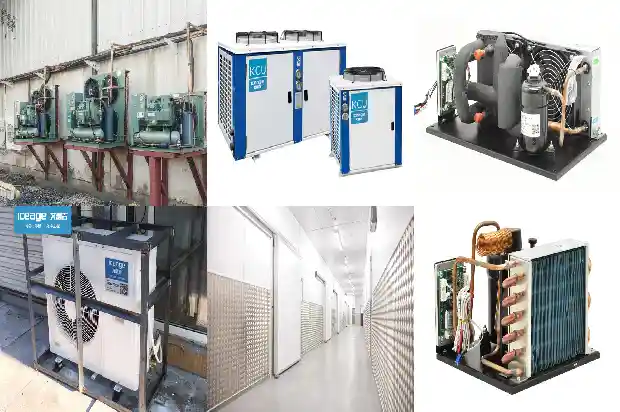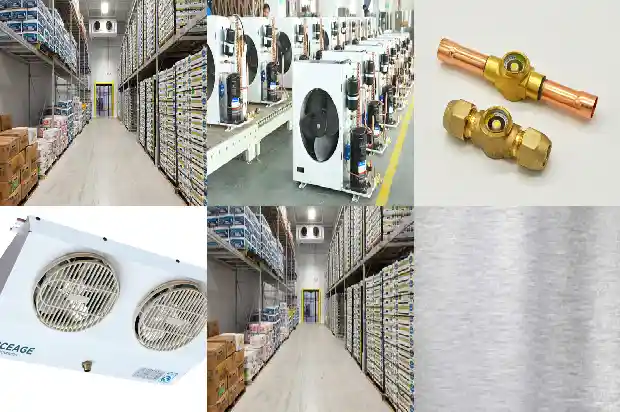Common Cold - chain Storage Methods for Fruit and Vegetable Cold Storage
2025-01-04
Cold chain warehousing is a low - temperature storage process based on cryogenic technology and using refrigeration technology as a means.

I. Characteristics of Fruits and Vegetables and Fresh - keeping Storage Methods
Combined with the characteristics of fruit and vegetable products, there are mainly four methods of fresh - keeping storage of fruits and vegetables at this stage: ordinary cold storage, controlled - atmosphere storage, hypobaric storage, and ice - temperature storage.
1. Temperature Characteristics
Temperature is an environmental factor in the cold chain warehousing for fruit and vegetable fresh - keeping. It affects both the various physical and chemical processes of fruits and vegetables and the activities of microorganisms. The quality change of refrigerated fruit and vegetable products mainly depends on the variable range of controlled temperature and humidity. The temperature change of stored fruits and vegetables, and even the temperature gradient between the surface temperature and the internal temperature of fruit and vegetable items will have an impact.
Generally speaking, when the temperature rises, the respiration, transpiration, hydrolysis, ripening and aging of fruits and vegetables will all be enhanced, and the proportion of anaerobic respiration will increase. The climacteric of some fruits and vegetables will appear earlier. For respiring fruits and vegetables, suppressing or delaying the appearance can control ripening and extend storage. Under appropriate low - temperature, cooling methods and unit packaging requirements, the various metabolic links of fruits and vegetables still maintain the original coordinated balance, and a reasonable storage and fresh - keeping environment can be obtained. Frequent temperature changes are not beneficial to the fresh - keeping and storage of fruits and vegetables. They promote both fruits and vegetables and microorganisms. The change in temperature will also cause fluctuations in air humidity.
Ordinary cold storage, also known as low - temperature storage, refers to the method of storage in an environment between 0°C and 10°C.
Generally speaking, when the temperature rises, the respiration, transpiration, hydrolysis, ripening and aging of fruits and vegetables will all be enhanced, and the proportion of anaerobic respiration will increase. The climacteric of some fruits and vegetables will appear earlier. For respiring fruits and vegetables, suppressing or delaying the appearance can control ripening and extend storage. Under appropriate low - temperature, cooling methods and unit packaging requirements, the various metabolic links of fruits and vegetables still maintain the original coordinated balance, and a reasonable storage and fresh - keeping environment can be obtained. Frequent temperature changes are not beneficial to the fresh - keeping and storage of fruits and vegetables. They promote both fruits and vegetables and microorganisms. The change in temperature will also cause fluctuations in air humidity.

Ordinary cold storage, also known as low - temperature storage, refers to the method of storage in an environment between 0°C and 10°C.

Related Articles
- Sensor for Refrigerant Leak Detection in Cold Chain Transportation
- Introduction to the Construction and Features of Cold Storage in Cold Chain Logistics
- What Are the Common Reasons for Difficulties in Cooling a Cold Storage?
- Introduction to Inspection and Handling Methods for Refrigerant Leak in Cold Storage
- How to Resolve the Scuffing Issue of Cold Storage Compressors
- What is the Correct Operation Method of the Distribution Box during Cold Storage Installation?
- Reasons for Frost Formation in Cold Storage and Defrosting Methods
- What Are the Differences Between R22 and R404A Cold Storage Systems?
- Maintenance Methods for Small Modular Cold Storage Failures
- What Vacuum Requirements Do Cold Storage Equipment Have?
- What Issues Should Be Noted in Cold Storage Installation and Construction?
- Common Malfunctions in the Operation of Cold Storage
- What Special Requirements are There for the Installation of Tea Cold Storage?
- How to Solve the Problem of Frequent Shutdown and Startup of Cold Storage Compressors?
- What are the Storage Conditions of Nectarine in Controlled Atmosphere Cold Storage?
- What Precautions Should Be Taken When Using a Fresh - keeping Cold Storage in Summer?
- Introduction to Basic Types of Cold Storage
- How to Choose Between Water-cooled and Air-cooled Cold Storage?
